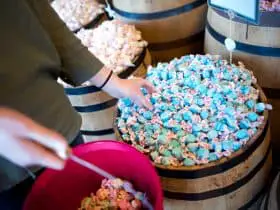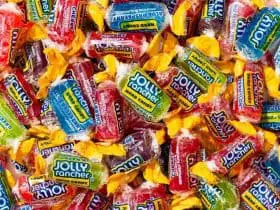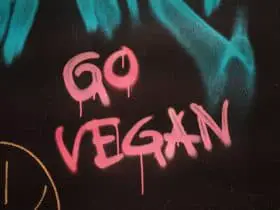Veganism has evolved from being just a dietary plan adopted by a niche group of people to more of a lifestyle backed up by a set of ethics and beliefs. Such a trend has now come to define many consumer habits and purchase choices to the extent that big fashion brands started to take notice.
In this article, we’ll explore how the fashion industry is evolving to adapt to the increased demand for more vegan products and how this movement can shape up the future of your wardrobe.
Largest Vegan Markets
The vegan market in the U.S. keeps expanding year after year, with about 6% of the population considering themselves vegans. Such numbers have come a long way from just 1% back in 2014 to become a big enough market segment capable of making a difference.
Furthermore, the U.K. is catching up with about 600,000 people adopting the vegan lifestyle in 2018. That’s not all; even non-vegans are now more aware of how a simple feat like limiting animal-derived substances in our products can cut our carbon footprint and benefit the planet.
A whopping 250,000 people have participated in the Veganuary’s movement in the U.K. for January 2019. With the numbers of participants doubling each year, we’re more optimistic than ever that those people can vote with their wallets and pressure manufacturers to take an animal cruelty-free stance.
France, Germany, and Denmark are some of the European countries that showed a renewed commitment to open up their markets to more vegan products. Denmark alone has achieved a 320% increase in their vegan products compared to their last year’s figures, and fashion is among the key contributors to such impressive statistics.
What Is Vegan Fashion?
There are many misconceptions surrounding vegan fashion, and we still don’t have a standardized process to label the various products in the fashion segment. Different products are subject to different standards, and not all the products that claim to be vegan are actually vegan.
To cut to the chase, vegan fashion includes all clothing manufactured without subjecting animals to any cruelty in the process. You won’t find any animal-based fibers or leathers in such products. So, you have to think twice before purchasing a blouse that claims its animal-based wool or silk is vegan-friendly.
No Fur, No Problem
No one can deny the impact that designer luxury brands have on the fashion industry as a whole. That’s why we believe many fashion houses will follow in the footsteps of Gucci, Chanel, and Versace to ban fur from their new collections.
This movement that became prominent in 2018 is set to change society’s standards and shed new lights on some of the oldest fashion cornerstones. Instead of linking fur to luxury, it’s now synonymous with animal cruelty.
Leather is another problem the vegan fashion movement decided to address lately. For the most part, people believed leather is a bi-product of the animal we already breed for food. So, instead of putting it to waste, we’re assigning it to fill a new role in a cute top or a waterproof jacket.
This argument falls short as over a billion animals, including wildlife, are being killed each year only for their hide. Furthermore, processing leather to become ready for consumer clothing brings about devastating effects on the environment.
The Massachusetts Institute of Technology (MIT) estimates that 130 metric tons of carbon dioxide equivalent are annually emitted from the leather industry. To put these numbers into perspective, they’re comparable to the exhaust fumes emitted from 22 folds the number of cars in NYC.
Sadly, we haven’t come to the end of our story yet. About 70% of the water pollution in the U.S. is attributed to leather factories, as they use harmful chemicals to tan leather. Such chemicals eventually find their way into our rivers and lakes, causing severe ecological effects.
Finally, chromium is the chief chemical used in leather priming, which is extremely toxic and significantly affects leather workers’ health.
The objective discussions around how we’re impacting our planet and its animal inhabitants have evolved from being just ideas and slogans to actual changes. Consumers have the power to hold manufacturers accountable for the environmental damages by only supporting the products that respect their ethical, vegan beliefs.
Textile Challenges
So, the logical follow-up question is: what’s the alternative to animal hide? The answer might be a little bit complicated. Some manufacturers are experimenting with fake leathers made of plastics like PVC.
Such material choice solves one problem but contributes to another. Plastic tends to stick around in the environment for so long, adding to our planet’s burden of non-degradable waste that threatens our biodiversity. Furthermore, this plastic leather is more brittle and looks cheap.
However, this never discouraged researchers from exploring entirely new materials like synthetic leather, wool, and silk made from plant-based products.
For example, a group of students from Columbia University has been looking into wool made from hemp, mushroom enzymes, and coconut fibers. They even collaborated with fashion designers to test their new textile.
These new materials aim to replicate their animal-based counterparts’ look and feel without subjecting animals to any suffering in the process.
For us, as humans, to continue in our path of technological advancements, we should think about more sustainable solutions for the future and come up with ways to co-exist with our planet’s ecosystems.
Footwear With Green Footprint
On reviewing the numbers of the U.S. Department of the Interior, we should have a wake-up call. Americans throw around 300 million pairs of shoes every year! Aside from the colossal waste left behind, consider how many animals are being killed or subjected to cruelty if every pair of the 300 million has even the slightest traces of animal products.
Thankfully, footwear is among the leading fashion segments to adopt the vegan approach. In 2018, the U.S. witnessed a 32% growth in its vegan footwear, while the U.K. numbers came around 16%.
Considering the footwear market’s size, such numbers prove that a fundamental change in the supply chain and production lines can exponentially benefit the environmental and animal-protection fronts.
A massive retailer like Marks & Spencer (M&S) has noticed the consumers shift towards veganism, and it decided to do its part to meet up the demands. The retailer’s analytics data has shown a 200% increased interest in vegan footwear from searches on the Marks & Spencer website alone.
This was quickly translated into M&S’s largest vegan footwear collection ever with 350 new styles for the spring season of 2019 alone.
Again, this is the perfect segue to highlight how the rise in vegan fashion goes hand in hand with the consumers’ movement towards ending animal cruelty once and for all. Don’t ever think that you’re just one person and your choices have no significance. This is far from true, as we’re actually capable of changing a whole industry to the best.
Vegan Beauty Products
The beauty industry has secured its crown as the most vegan-friendly fashion segment. Skincare products, make-up, and cosmetics are all shifting towards relying entirely on plant-based substances.
Consumers are even looking deeper into the products they choose to support. Being free of any animal products seems not to be vegan enough in the beauty segment. It’s as important to ensure that no animals were subjected to mistreatment throughout the process of developing and testing the products before hitting the market.
The vegan cosmetics market is projected to grow from 12.4 billion dollars in 2018 to 20.8 billion dollars by 2025. We have a long way to go until the majority of cosmetic products are cruelty-free, but we’re off for a good start.
First-Ever Vegan Fashion Week
Los Angeles has seen a first of its kind event in February of 2019. The vegan fashion week has delivered on its promise to act as a platform to celebrate and educate about vegan fashion culture.
This isn’t your typical runway, as all the collections showcased were made exclusively from vegan materials. The ultimate goal of such an event is to raise a discussion in the fashion industry, and we think it succeeded.
In Conclusion
Consumer expectations have remained the most important driving force to shape our society and its key industries. If the past couple of years are any indicator, we’re at the prime of a complete make-over to how we look into the fashion products we purchase.
With more prominent players in the fashion industry pledging to shift towards more sustainable, vegan practices, we’re optimistic that our collective individual values can finally help shape the future we aspire for.











![[Company Profile] Will's Vegan Shoes: The Best Products They Offer 41 Will's Vegan Shoes](https://getvegan.com/wp-content/uploads/2021/10/wills-vegan-shoes-280x210.jpg)
Leave a Reply